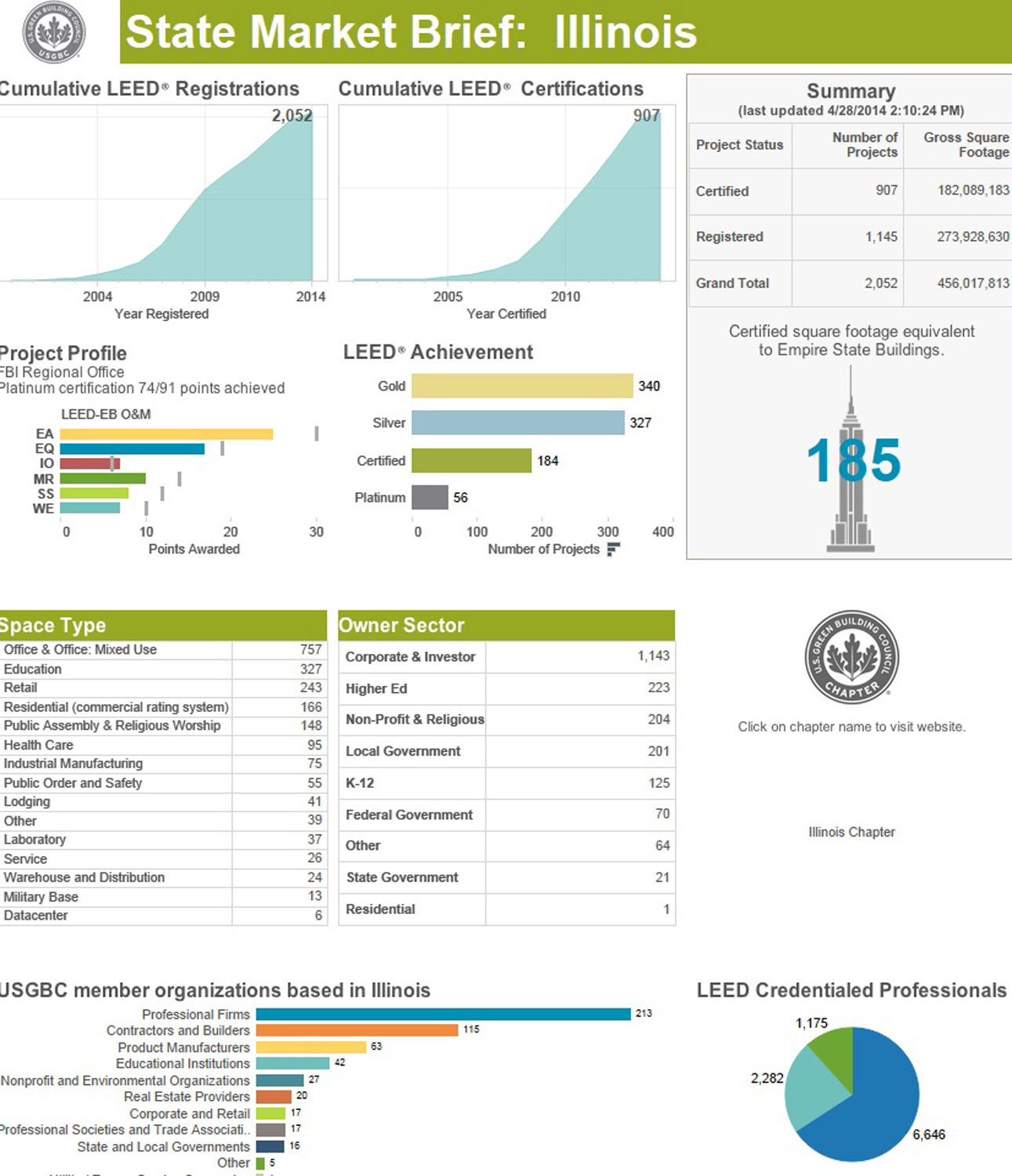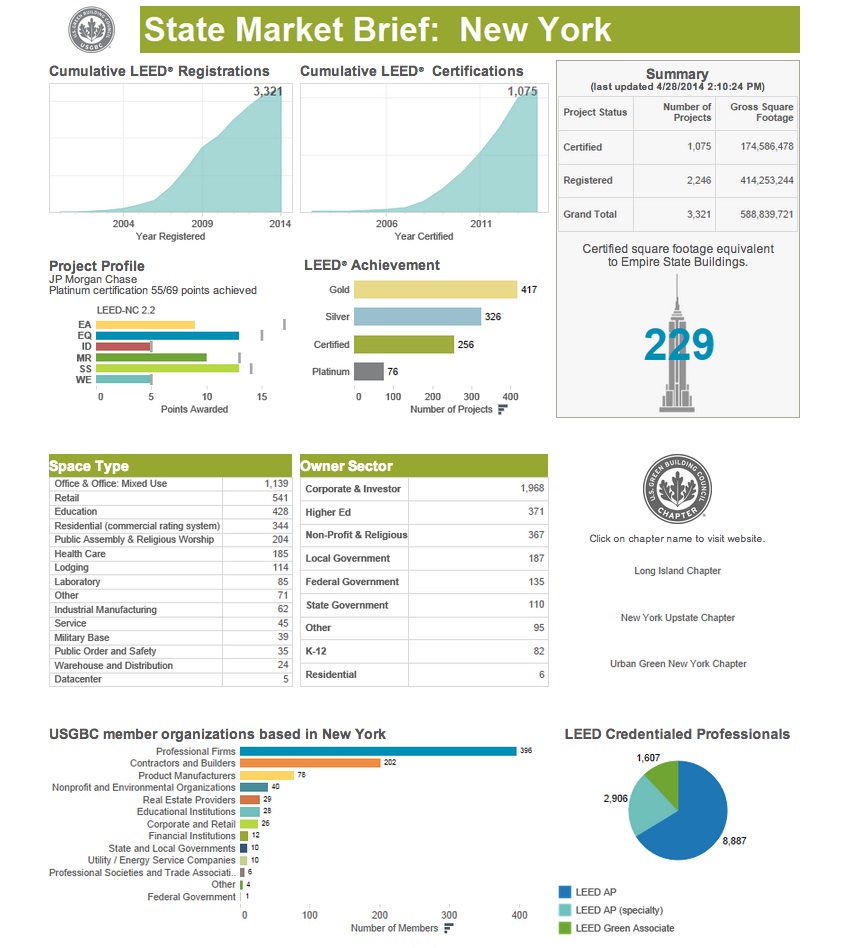The U.S. Green Building Council last week launched an online data visualization resource that highlights real-time green building data for each state in the U.S. and Washington, D.C.
The enhanced state market briefs—which highlight LEED projects, LEED-credentialed professionals, and USGBC membership in each state—provide green building advocates and the general public a look into LEED’s impact within any U.S. state.
The market briefs were created to supply green building advocates with on-the-ground information to tell robust stories about the multifaceted benefits of LEED green buildings. Each market brief acts as a state-level barometer of economic activity taking place in the green building industry.
Market briefs for countries outside the U.S. are available upon request, and LEED for Homes and LEED for Neighborhood Development data and projects will be added later this year.
The market briefs highlight data on cumulative LEED-registered and -certified projects, gross square footage of LEED-registered and -certified space, project totals broken out by owner type and space type, USGBC member organizations by type, LEED professional credential holders, links to chapter(s) serving that state, as well as a project profile scorecard.
"Our state-level market briefs demonstrate USGBC’s commitment to data and information transparency at an important level of granularity. You can’t find this data anywhere else in the market,” said Mahesh Ramanujam, chief operating officer, USGBC. "The choice to build green buildings is simple. These state-level data visualizations make it even simpler."
The state market briefs can be downloaded either as a visualization or as a raw data file and are accessible at USGBC.org/advocacy/market-brief.
Here are screen captures of the dashboards for California, Florida, and New York:
Related Stories
| Jan 31, 2013
More severe wind storms should prompt nationwide reexamination of building codes, says insurance expert
The increased number and severity of storms with high winds nationally should prompt a reexamination of building codes in every community, says Mory Katz, vice president, Verisk Insurance Solutions Commercial Property, Jersey City, N.J.
| Aug 28, 2012
McCarthy begins construction on transportation center at Bob Hope Airport
Designed to meet LEED silver certification standards, the facility will feature unique, above ground base isolators that will resist a maximum credible earthquake.
| Jun 14, 2012
Viscardi joins LEO A DALY as VP, corporate director of aviation programs
Viscardi will be responsible for providing the vision and strategy for growing the firm’s aviation practice, identifying and establishing new clients, as well as maintaining existing client relationships.
| Jun 1, 2012
New BD+C University Course on Insulated Metal Panels available
By completing this course, you earn 1.0 HSW/SD AIA Learning Units.
| May 30, 2012
Construction milestone reached for $1B expansion of San Diego International Airport
Components of the $9-million structural concrete construction phase included a 700-foot-long, below-grade baggage-handling tunnel; metal decks covered in poured-in-place concrete; slab-on-grade for the new terminal; and 10 exterior architectural columns––each 56-feet tall and erected at a 14-degree angle.
| May 29, 2012
Reconstruction Awards Entry Information
Download a PDF of the Entry Information at the bottom of this page.
| May 24, 2012
2012 Reconstruction Awards Entry Form
Download a PDF of the Entry Form at the bottom of this page.
| Mar 29, 2012
U.K.’s Manchester Airport tower constructed in nine days
Time-lapse video shows construction workers on the jobsite for 222 continuous hours.
| Mar 27, 2012
Skanska hires aviation construction expert Bob Postma
Postma will manage Skanska’s nationwide in-house team of airport construction experts who lead the industry in building and renovating airport facilities and their essential features.
| Jan 4, 2012
New LEED Silver complex provides space for education and research
The academic-style facility supports education/training and research functions, and contains classrooms, auditoriums, laboratories, administrative offices and library facilities, as well as spaces for operating highly sophisticated training equipment.


















